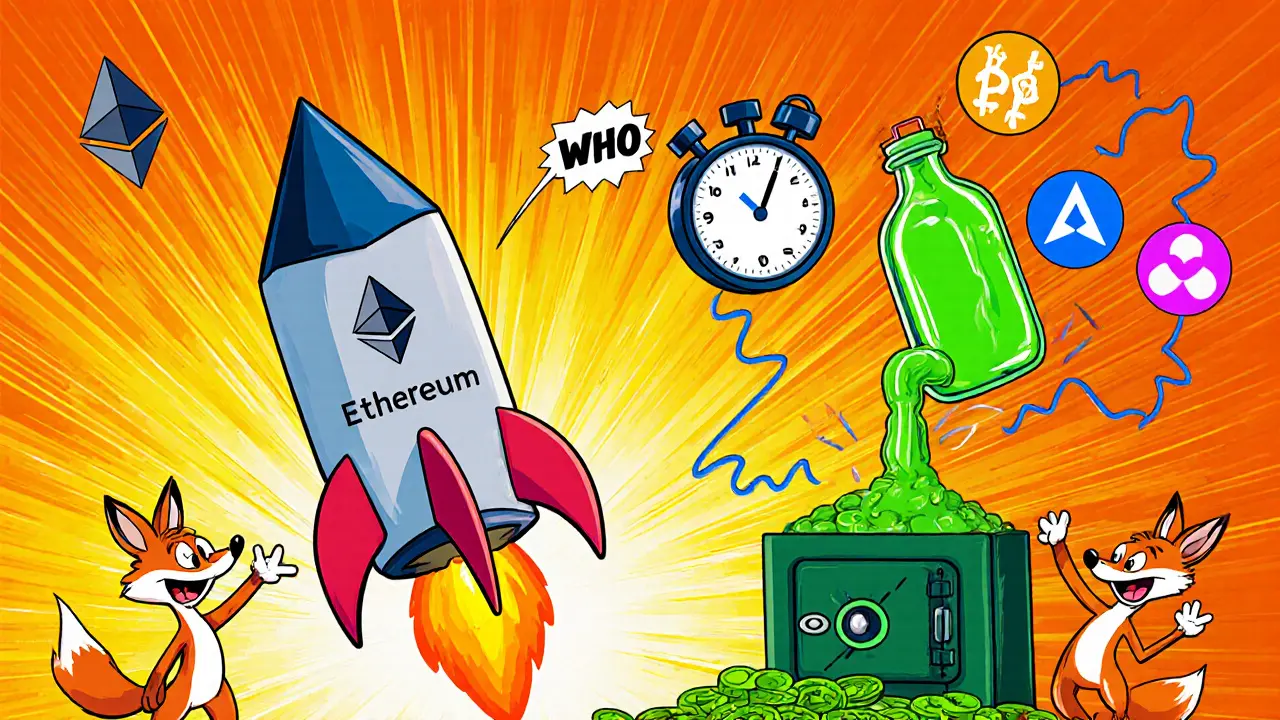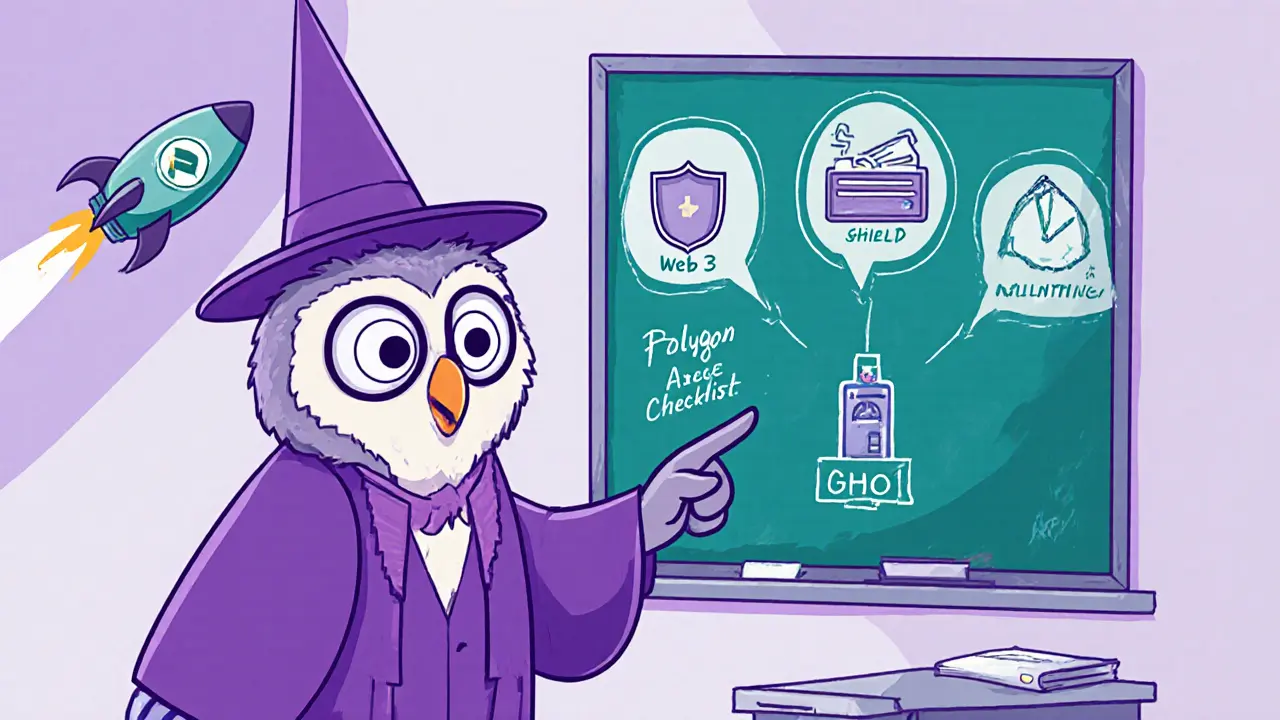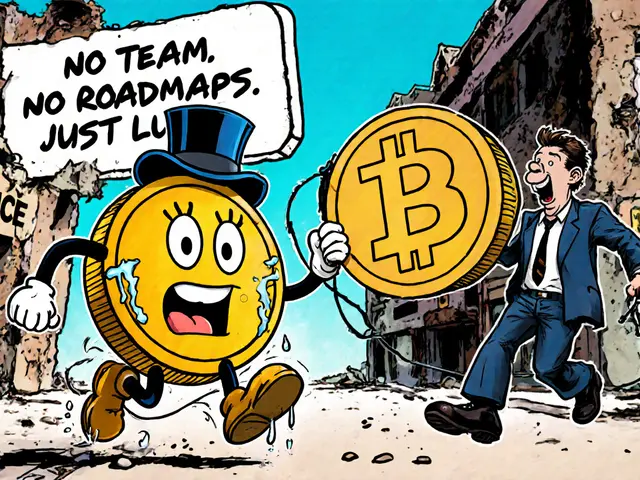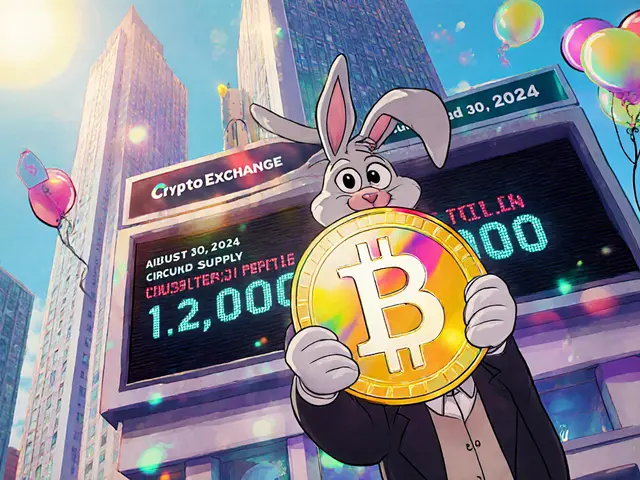
Flash Loan Profit Calculator
Flash loans let you borrow assets without collateral, but must be repaid within a single Ethereum block. Calculate if your arbitrage opportunity is profitable after gas fees.
Enter your trade details and see if it's worth executing a flash loan. The calculator accounts for Aave's gas fees on different networks.
Quick Takeaways
- Aave is a DeFi lending protocol, not a traditional crypto exchange.
- It manages over $18billion in TVL across 12+ blockchains as of Oct2025.
- Flash loans dominate the market with a 78% share; daily volume exceeds $1.2billion.
- GHO, Aave’s native over‑collateralized stablecoin, holds $1.8billion in circulation.
- Higher gas fees on Ethereum and a steep learning curve are the main drawbacks.
If you typed “Aave crypto exchange review” into Google, you’re probably looking for a rundown of what the platform actually does, how it stacks up against rivals, and whether it’s worth using. This article gives you exactly that - a no‑fluff, data‑driven Aave review that covers features, security, performance, and recent upgrades.
What Is Aave?
When talking about DeFi lending, Aave is an open‑source, non‑custodial liquidity protocol that lets users earn interest on deposits and borrow against collateral. Launched in 2017 as ETHLend, it rebranded to Aave in 2020 and introduced the AAVE governance token (see next section). Unlike centralized exchanges, Aave never holds user funds; smart contracts on each supported blockchain manage the assets.
The AAVE Token and Governance
The native token AAVE serves two purposes: voting on protocol upgrades and acting as a backstop in the Safety Module. The total supply stands at 12,337,954 tokens, with a $450million insurance fund derived from staked AAVE. Holders can stake their tokens to earn a share of protocol fees and protect the system against insolvency events.

Core Features That Set Aave Apart
- Flash Loans: Uncollateralized loans that must be repaid within a single Ethereum block (≈13seconds). Aave processes around 12,500 flash loans daily with a 99.87% success rate.
- Rate Switching: Borrowers can toggle between stable and variable interest rates, helping them manage exposure to market volatility.
- GHO Stablecoin: Launched in 2024, GHO is an over‑collateralized stablecoin with a minimum 115% collateral ratio. As of Oct2025, it holds $1.8billion across four networks.
- Cross‑Chain Lending: Aave v3 runs on Ethereum, Arbitrum, Optimism, Polygon, Avalanche, Fantom, and more, making liquidity accessible on low‑fee Layer‑2 solutions.
- Safety Module: Staked AAVE forms a $450million safety buffer that can be slashed to cover shortfalls.
Technical Architecture & Security Audits
Aave’s smart‑contract stack is layered, with core lending pools, a risk module, and a governance router. The codebase has been audited by six top firms-including Trail of Bits, OpenZeppelin, and Certik-covering both Ethereum mainnet and Layer‑2 deployments. Transaction confirmation typically needs 10 blocks, translating to about 5minutes on average, though network congestion can stretch this period.
Performance Metrics (Oct2025)
- Total Value Locked (TVL): $18billion, placing Aave third behind Lido and MakerDAO.
- Loan‑to‑Value (LTV) Ratios: Up to 80% for major assets like ETH and USDC.
- Interest Rates: Variable APR on USDC hovers around 3.2%; stable‑rate options are within 0.3% of variable rates.
- Gas Fees: Average $4.20 per transaction on Ethereum, versus $0.85 on Polygon after the v3.5 gas‑optimization upgrade.
- Flash‑Loan Volume: $1.2billion monthly, capturing 78% of the market share.
How Aave Stacks Up Against Competitors
| Metric | Aave | Compound | MakerDAO |
|---|---|---|---|
| TVL (Oct2025) | $18B | $7.5B | $24.7B |
| Supported Chains | 12+ | 5 | 3 |
| Flash‑Loan Share | 78% of market | 12% | - |
| Average Gas (ETH) | $4.20 | $3.80 | $4.00 |
| User Difficulty (DeFi Safety Scale) | 3.2 / 5 | 2.1 / 5 | 2.8 / 5 |
| Stablecoin Yield (APY) | 2.7% | 3.5% | 2.9% |
From the table you can see Aave leads in cross‑chain reach and flash‑loan dominance, while Compound offers lower gas costs on Ethereum and a gentler learning curve. MakerDAO remains the TVL giant, mainly because of its DAI stablecoin ecosystem.

Pros and Cons - A Balanced View
- Pros
- Largest flash‑loan infrastructure, ideal for arbitrage bots.
- Extensive multi‑chain deployment reduces fee exposure.
- GHO provides a DeFi‑native stablecoin with fast minting.
- Robust safety module backed by $450M insurance.
- Cons
- Higher Ethereum gas fees compared to Layer‑2 rivals.
- Steeper onboarding; 35% higher abandonment rates for new users.
- Complex collateral management leads to liquidations (68% of support tickets).
- Regulatory uncertainty around stablecoins and governance tokens.
Getting Started - A Checklist for New Users
- Install a Web3 wallet (MetaMask, Trust Wallet, or Ledger).
- Connect the wallet to the Aave interface; choose your preferred network.
- Complete the interactive security quiz - required before borrowing.
- Deposit assets; watch the displayed LTV and health factor.
- If borrowing, decide between stable and variable rates.
- Explore flash loans only after testing with small amounts on a testnet.
- Consider staking AAVE in the Safety Module to earn rewards and support the protocol.
Following these steps can cut the typical 15‑20hour learning curve down to about 8hours for basic lending and borrowing.
Recent Developments & Roadmap (2025‑2026)
- September2025: v3.5 upgrade reduced Ethereum gas costs by 37%.
- October2025: GHO launched on Arbitrum and Optimism, expanding coverage to four major networks.
- Q42025: Aave Arc’s private pools secured partnerships with JPMorgan and BlackRock.
- 2026 Outlook: Focus on institutional lending, deeper integration of GHO with traditional payment rails, and cross‑chain liquidity aggregation.
These moves signal Aave’s shift from a retail‑focused protocol to an enterprise‑grade DeFi infrastructure.
Frequently Asked Questions
Is Aave an exchange or a lending platform?
Aave is a decentralized lending and borrowing protocol. It does not facilitate spot trading like a crypto exchange.
How do flash loans work on Aave?
A flash loan lets you borrow any amount without collateral, as long as you repay it within the same block (≈13seconds). If repayment fails, the transaction reverts, so the loan is never actually executed.
What is GHO and how is it different from DAI?
GHO is Aave’s native over‑collateralized stablecoin, requiring a minimum 115% collateral ratio. Unlike DAI, which is governed by MakerDAO, GHO is minted by approved facilitators within the Aave ecosystem.
Can I earn yield by staking AAVE?
Yes. Staking AAVE in the Safety Module earns a share of protocol fees and contributes to the $450M insurance fund.
Which network offers the cheapest gas for Aave transactions?
Polygon and Arbitrum generally provide the lowest gas costs (around $0.85 per transaction), especially after the v3.5 gas‑optimization rollout.
Whether you’re an arbitrage pro eyeing flash loans or a long‑term holder looking for stable yields, this Aave review should give you the clarity you need to decide if the protocol fits your strategy.





